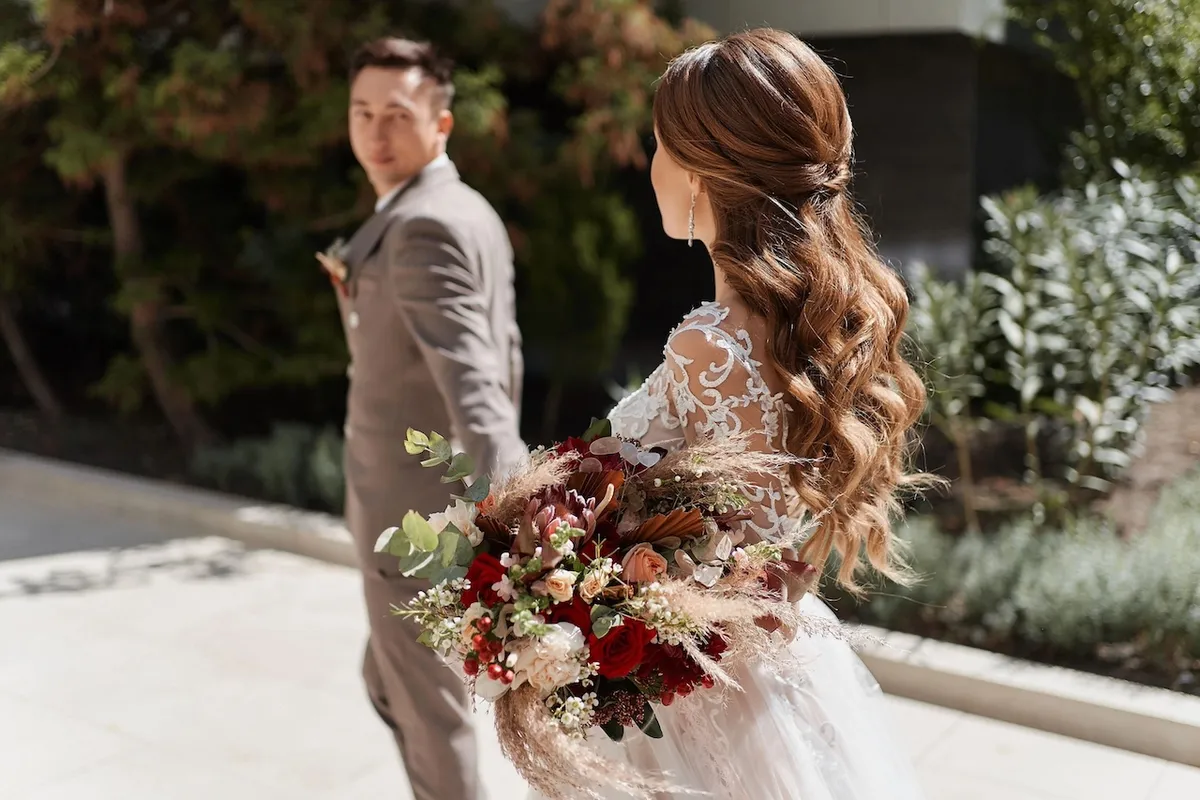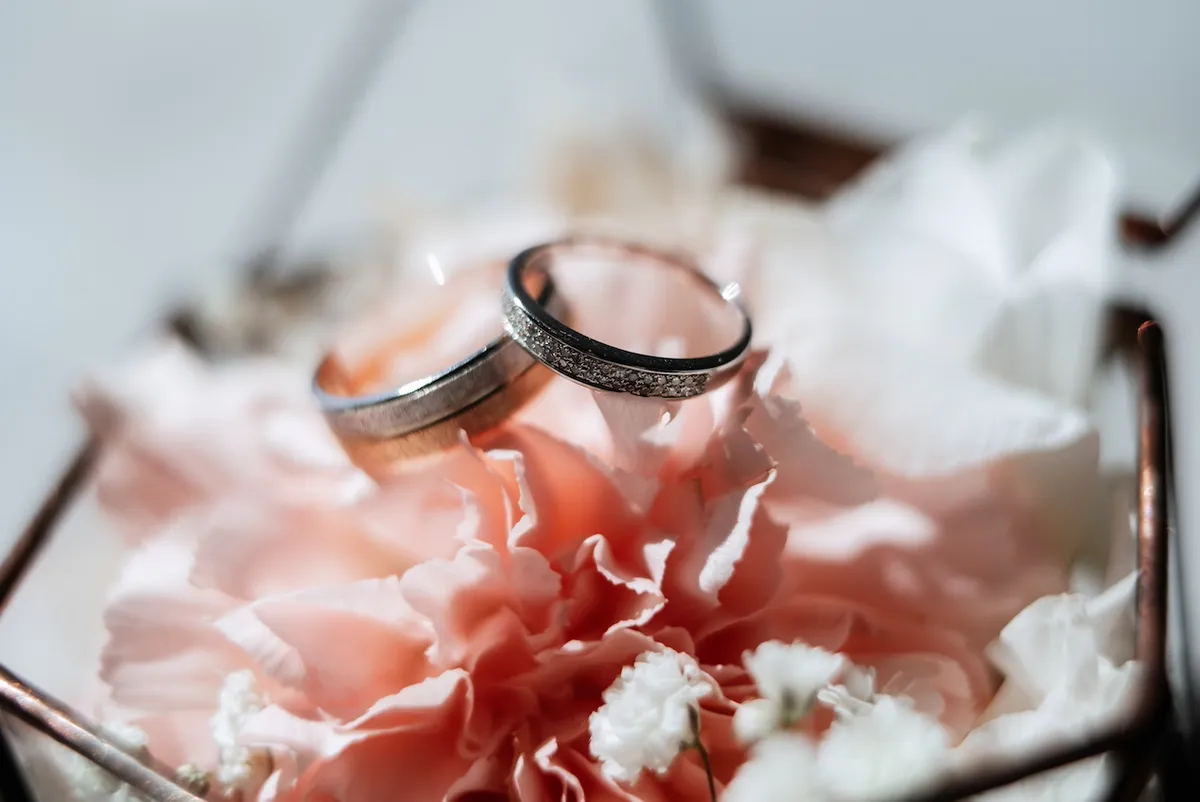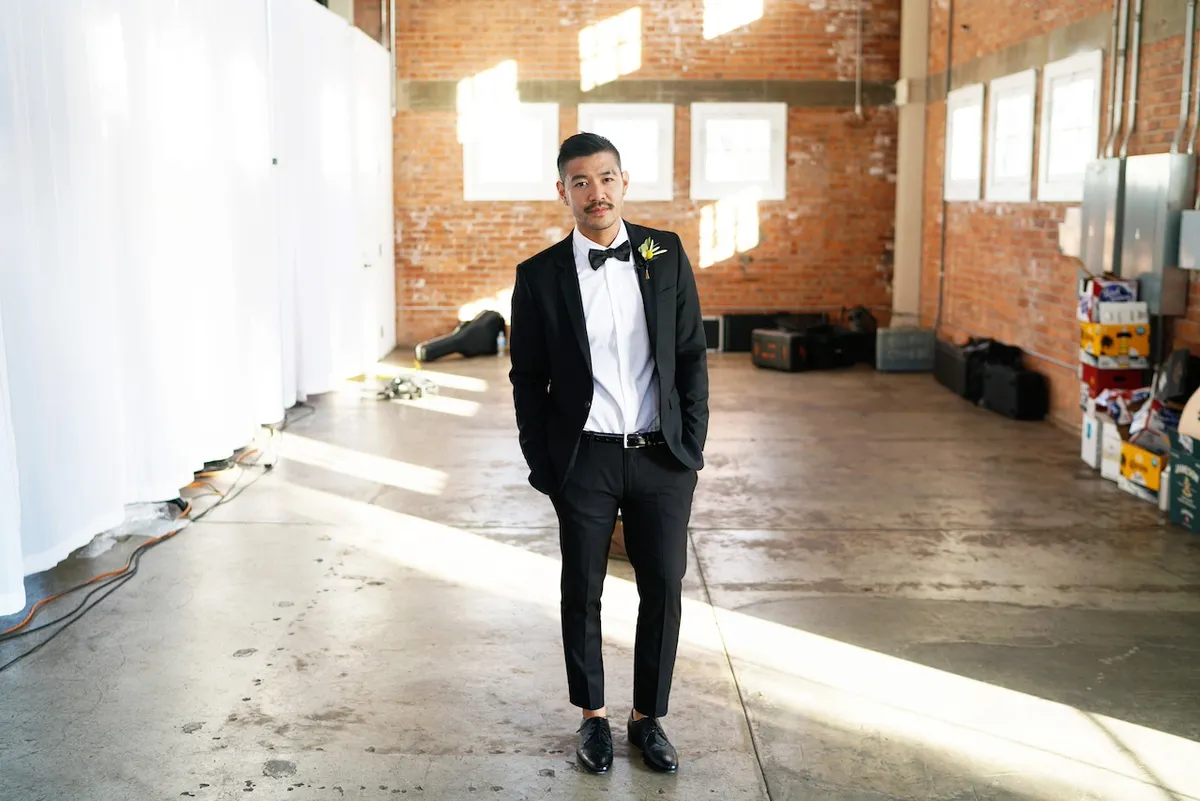
Every bride and groom want their wedding day to be special, but have you ever wondered why we follow certain traditions? For instance, the tradition of wearing a white dress only began with Queen Victoria's marriage in 1840.
This blog will unwrap the stories behind these cherished customs, giving your celebration more meaning. Stay tuned for some truly surprising origins!
The History Behind Time-Honored Wedding Traditions
Wedding traditions have been passed down through generations, with some dating back to ancient times and others evolving over time. From the origin of marriage itself to the significance of wearing a white wedding dress, these customs are deeply rooted in cultural heritage and historical symbolism.
The origin of marriage
Marriage started a long time ago and it was a way for families to form strong ties with each other. People from ancient times would get married to build a safe community, share resources, and support one another.
Over many years, these union rituals became important traditions in cultures all over the world.
The reasons why people marry have changed as times moved forward. Long ago, love wasn't always the main reason for marriage like it often is today. Instead, marriages were arranged by families who wanted to make sure their land stayed safe or to gain more power or wealth through the union of their children.
Today, historical significance still echoes in modern marriage customs where love joins together with cultural heritage.
Wearing a white wedding dress
The tradition of wearing a white wedding dress dates back to the 19th century. Previously, brides simply wore their best dress regardless of its color. However, Queen Victoria sparked the trend for white wedding dresses when she married Prince Albert in 1840.
Her choice was rooted in showcasing luxury and purity rather than symbolism related to virginity as is often believed today. Since then, the white wedding gown has become an enduring tradition symbolizing innocence, purity, and new beginnings for countless brides worldwide.
The tradition of wearing a white wedding dress was popularized by Queen Victoria in 1840 and has since become an enduring symbol of purity and new beginnings for many brides.
Tossing the bouquet
During the wedding reception, the bride gathers all unmarried women and tosses her bouquet into the crowd. It's believed that the one who catches it will be the next to get married.
This tradition symbolizes passing on good fortune and happiness to another woman as she starts her journey into marriage, linking back to old folklore origins around fertility and luck.
The bouquet-tossing ritual holds significance in many cultural wedding practices, embodying hope for future marital bliss as part of time-honored traditions.
Carrying the bride over the threshold
In ancient Rome, it was believed that evil spirits might try to harm the bride when she entered her new home. So, the groom would carry her over the threshold to protect her. This tradition symbolized his strength and willingness to care for her.
Carrying the bride also demonstrated his commitment to making her transition into their new life together as smooth as possible. The act of carrying the bride over the threshold is a symbolic gesture of protection, love, and support during this significant change in both their lives.
This custom represents an emotional and meaningful moment for many couples today during their wedding day. The simple act holds powerful symbolism tied to long-standing traditions surrounding marriage rites and nuptial rituals.
Serving a wedding cake
During weddings, serving a wedding cake symbolizes the couple's union and the sharing of their first meal together as partners. The tradition of cutting the cake represents the newlyweds' commitment to provide for each other and their guests.
This custom dates back centuries and has evolved into an essential part of modern matrimonial celebrations, signifying good luck and prosperity for the future. As one of the focal points in many wedding receptions, this sweet tradition is cherished as a significant moment that marks the beginning of marital life.
Surprising and Dark Origins of Wedding Traditions
The history behind some wedding traditions may hold surprising and even dark origins. From the symbolization of ownership with engagement rings to the practice of kidnapping the bride, these ancient customs have evolved to what we know today.
Ownership symbolized by engagement rings
Engagement rings have a long history of symbolizing ownership. In ancient times, these rings were seen as a way for a man to claim his bride as his property. The tradition stems from the belief that once a woman accepted the ring, she became her husband's possession.
Over time, this symbolism has evolved into representing love and commitment rather than ownership.
The significance of engagement rings in modern weddings cannot be understated. Today, these rings stand as symbols of love and devotion between partners. The giving and receiving of engagement rings is a cherished tradition that marks the beginning of an important journey for couples as they prepare to embark on married life together.Keyword: Engagement rings, Ownership symbolism.
The purpose of bridesmaids
Bridesmaids originally had a specific task - to protect the bride. This tradition started back in ancient Rome, where bridesmaids dressed like the bride to confuse vengeful spirits or robbers who might want to harm her.
In more recent times, bridesmaids assist with planning and emotional support for the bride before and during the wedding day, ensuring everything runs smoothly and helping keep the bride calm.
Today, they continue to play an important role in supporting the bride and adding a touch of elegance to wedding ceremonies.
Kidnapping the bride
In ancient times, kidnapping the bride was a custom with somewhat sinister origins. It originated from the idea that women needed to be taken forcefully from their communities to start a new life with their husbands.
This tradition is related to the notion of ownership of the bride and often involved actual abduction or staged escape scenarios. While this practice may seem archaic and troubling today, its historical significance sheds light on how marriage customs have evolved over time.
Masking the bride's body odor
During ancient wedding ceremonies, it was believed that brides should smell pleasant to ward off evil spirits. To ensure this, brides would carry bouquets of fragrant herbs and flowers or wear wreaths made from aromatic plants such as rosemary and dill.
Masking the bride's body odor
In the past, people believed weddings were susceptible to evil spirits' interference. To counteract this, brides used to carry a bouquet of herbs and strong-smelling flowers. The aim was to ward off any foul odors that might emanate from the bride.
This also served as a way for the couple to start their married life on a positive note, keeping unpleasant smells at bay as they began their journey together.
Ancient bridal customs often involved unique practices for practical reasons. One such method was using fragrant bouquets and garlands to mask body odor during weddings. The belief was that pleasant scents would keep malevolent spirits away and bring good luck to the newlyweds.
Annual baths in May
In ancient times, the tradition of annual baths in May symbolized purification and renewal. People believed that taking a bath before getting married would cleanse them of any past misfortunes or bad luck and prepare them for a fresh start in their new life together.
This ritual was also seen as a way to purify both the body and soul before entering into the sacred union of marriage, aligning with the cultural traditions surrounding matrimony and symbolizing the importance of cleanliness and purity in starting a new chapter in life.
The custom of annual baths in May held deep significance, signifying not only physical cleanliness but also spiritual purification as couples embarked on their journey into marriage.
This ancestral practice reflected the belief that through cleansing rituals, one could wash away any lingering negativity from the past and enter their married life with renewed hope and positivity.

Symbolism and Superstitions in Wedding Traditions
Bridesmaids dressing alike to confuse spirits, wearing a red wedding dress, covering the face or hair with a veil, tying cans to the bumper of the car, and the tossing of rice all hold deep symbolism and superstitions in wedding traditions.
Bridesmaids dressing alike to confuse spirits
Bridesmaids dress alike to confuse spirits, a tradition dating back to ancient Rome and Greece when everyone wore similar outfits to shield the bride from evil entities. This belief in evil spirits trying to harm the bride led bridesmaids and the bride herself to wear matching attire.
The purpose was not only for protection but also to make it harder for vengeful spirits or potential kidnappers to identify the bride among her friends. Although modern weddings have evolved beyond these superstitions, some couples still choose this tradition as a nod to its historical significance.
This practice of dressing bridesmaids identically during weddings is deeply rooted in folklore and traditions, often reflecting ancestral customs that aimed at safeguarding the couple's happiness on their wedding day.
Wearing a red wedding dress
In ancient China, the color red symbolized luck and joy, making it a popular choice for wedding attire. Brides wore elaborate red dresses embroidered with symbols of happiness and prosperity.
Red was believed to ward off evil spirits. In modern times, wearing a red wedding dress has become a trend in Western cultures as well, symbolizing love, passion, and boldness. Many brides opt for crimson or ruby-hued gowns to make a striking statement on their special day.
The significance of wearing a red wedding dress lies in its rich cultural history and symbolic representation of auspiciousness and romance. The vibrant hue adds an element of tradition blended with contemporary flair to the wedding ceremony.
Covering the face or hair with a veil
The tradition of covering the bride's face or hair with a veil dates back to ancient times and is rooted in the belief that it will protect her from evil spirits. This practice also symbolizes modesty, purity, and the bride's transition into a married woman.
The veil was meant to conceal the bride's features from any negative energy or envious onlookers, ensuring her happiness and safeguarding her until she was officially united with her partner in marriage.
In modern weddings, wearing a veil continues as a nod to tradition while also adding an element of mystery and anticipation before the dramatic unveiling at the altar. Veils are often beautifully adorned and customized to match the overall wedding attire, serving as a timeless symbol of love, commitment, and respect for cherished traditions.
Tying cans to the bumper of the car
At weddings, tying cans to the bumper of the car is a fun and symbolic tradition. The noise made by the cans as the car drives away is believed to scare off evil spirits. It's also a way for guests to send off the newlyweds with joy and celebration as they start their new life together.
This custom signifies well wishes for a happy and prosperous marriage, while also adding an element of excitement and festivity to the wedding day.
The tossing of rice
At weddings, the tossing of rice has been a long-standing traditionsymbolizing prosperity and fertility. As the newlyweds exit the ceremony, guests throw rice at them as a gesture of wishing abundance and good fortune in their marriage.
This ritual dates back to ancient times when rice was believed to have mystical powers that could bring prosperity and ensure future generations for the couple.
In modern weddings, this tradition has evolved with some couples opting for eco-friendly alternatives like bird seeds or flower petals. Despite these changes, the essence of showering the couple with well-wishes remains intact, making it a cherished part of wedding celebrations.
The Evolution of Modern Wedding Traditions
Modern wedding traditions have evolved to include engagement rings with diamonds, the use of planning apps for organizing the big day, creative DIY projects for outdoor weddings, unique wedding favor ideas, and the modern honeymoon experience.
Engagement rings with diamonds
Engagement rings with diamonds have become a cherished tradition in modern weddings. The tradition of presenting an engagement ring with a diamond to one's beloved dates back to the 15th century, symbolizing eternal love and commitment.
Diamonds themselves represent strength, purity, and lasting affection, making them the perfect choice for such a significant symbol in marriage traditions. This timeless practice remains popular today, embodying the enduring bonds between couples as they embark on their journey into matrimony.
The significance of engagement rings with diamonds is deeply rooted in the tradition of expressing unwavering devotion and unity. From ancient customs to contemporary ceremonies, these exquisite rings continue to play an integral role in celebrating love and commitment while serving as tangible reminders of enduring marital promises.
Planning through apps
Wedding planning has become more convenient and efficient thanks to various apps designed specifically for this purpose. These apps offer features such as budget tracking, vendor management, guest list organization, and even seating arrangement tools.
With just a few taps, couples can stay on top of their wedding preparations wherever they are. Moreover, many of these apps provide inspiration boards and checklists to help couples keep track of tasks leading up to their big day.
Couples today can easily collaborate with each other and vendors through these apps, making the entire process streamlined. Additionally, the use of wedding planning apps allows for easy communication with guests regarding important details such as venue location or last-minute changes.
Creative DIY projects for outdoor weddings
Outdoor weddings offer the perfect canvas for creativity and personalized touches. Here are some creative DIY project ideas to elevate your outdoor wedding:
- Mason Jar Lanterns: Create a warm and romantic atmosphere by hanging mason jar lanterns around the venue. Simply place candles or fairy lights inside the jars for an enchanting glow.
- Floral Arch: Construct a beautiful floral arch using fresh blooms and greenery to serve as a stunning backdrop for your ceremony. This DIY project adds a touch of natural elegance to your outdoor setting.
- Hand-painted Signage: Design and hand-paint custom signs to guide guests throughout the outdoor venue, adding a personal and charming element to your wedding decor.
- Potted Plant Centerpieces: Instead of traditional floral centerpieces, consider potting small plants or succulents in decorative containers for a unique and eco-friendly table decoration.
- Photo Booth Backdrop: Craft a whimsical photo booth backdrop using colorful ribbons, paper flowers, or draped fabric to provide a delightful spot for capturing memories with friends and family.
- Seating Chart Display: Showcase your creativity by designing a one-of-a-kind seating chart display, such as handwritten escort cards pinned to an intricately decorated board or hanging from branches.
- Herb-infused Favors: Give guests small potted herbs as favors, which can also double as table decorations. Personalize each pot with guests' names for a thoughtful touch.
- DIY Altar Decor: Adorn your altar with handmade decor elements like draped fabric, macramé hangings, or garlands of seasonal flowers to create a picturesque setting for exchanging vows.
Unique wedding favor ideas
Looking for unique wedding favor ideas to make your big day memorable? Here are some creative and thoughtful options:
- Personalized candles with the couple's names and wedding date engraved on them, symbolizing the eternal flame of love.
- Mini succulent plants as wedding favors, signifying growth, resilience, and everlasting love.
- Customized tea blends or coffee roasts packaged in elegant tins, representing the warmth and comfort of the couple's union.
- Handcrafted soaps in assorted scents and shapes, conveying purity, freshness, and new beginnings for the newlyweds.
- Engraved keychains with meaningful quotes or symbols to remind guests of the couple's special day whenever they use them.
The modern honeymoon
Today, modern honeymoons are seen as a time for the newlyweds to relax and celebrate their marriage. Couples often choose exotic or scenic locations to spend quality time together after the wedding.
It has become an opportunity for them to create lasting memories and strengthen their bond before settling into married life.
Honeymoons now play a significant role in weddings as couples opt for unique experiences over traditional norms. The focus is on creating personalized and unforgettable moments that reflect the couple's interests and desires, making it an integral part of their wedding journey.

Conclusion
In conclusion, wedding traditions have deep historical roots. Many may surprise us with their origins and symbolism. The evolution of these traditions reflects changing societal values.
Embracing the significance of these rituals adds meaning to modern celebrations. Exploring further resources can enhance your understanding and appreciation. Let's honor these timeless customs while infusing them with contemporary creativity.
Get legally married online
In partnership with Courtly, get legally married online.
From start to “I do.” Courtly team is fully committed to the cause: getting you married. They've done more remote weddings than anyone. Thousands of couples have counted on Courtly and we know what it takes to secure your legal marriage certificate.
Also, enjoy an exclusive discount available only to the MarryOnChain community! Use code MARRYONCHAIN to get $75 off your wedding.
RelatedRelated articles
All posts




